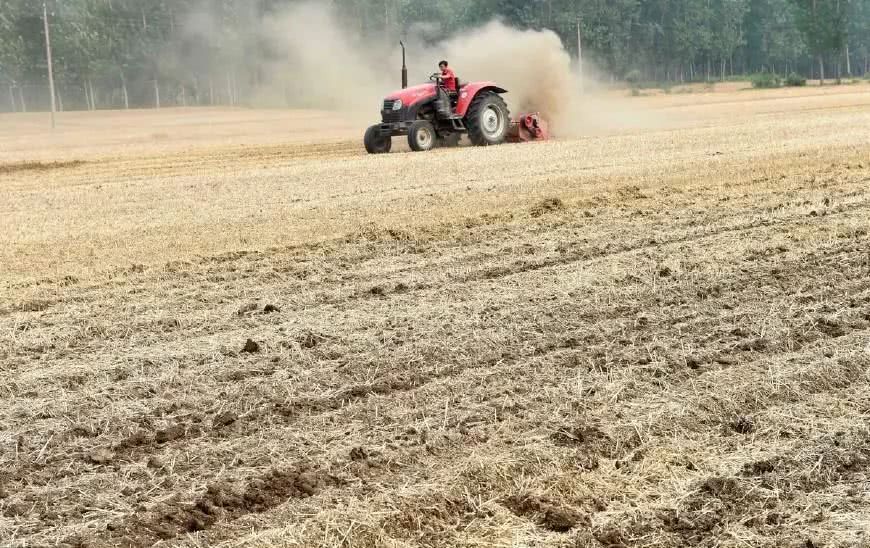No way is perfect-- discussion on the problems of returning Straw to Field

Abstract: is it really good to return straw to the field? There is no perfect way in the world.
Straw returning to the field is a good way to deal with straw in rural areas. vigorously promoting straw returning to the field also helps to reduce straw burning and greatly improve farmland soil fertility. It can be said to be a win-win result from both the farmers' personal point of view and the social point of view.
However, straw returning to the field does breed some problems, such as the increase of field insect pests, the aggravation of diseases, the impact of current wheat sowing, the shallower plough layer, and so on, may appear in straw returning to the field, but to a large extent, it is all because the straw has not been properly treated. First of all, let's introduce the effect of straw returning on wheat stubble one by one.
Increase in diseases and insect pests
There are two reasons for the increase of diseases and insect pests caused by straw returning to the field. On the one hand, straw belongs to organic matter, which is easy to breed pests. On the other hand, straw itself carries germs and eggs, which may harm the following crops. In view of the above two cases, in fact, because the straw is not mature, it is directly ploughed and buried in the ground, so the solution to this problem is to buy some baking powder that accelerates the ripening. It is basically OK to collect and ferment for ten days and a half months after the straw is broken. In this way, on the one hand, the organic matter is fully released through fermentation, on the other hand, the germs and eggs carried by the straw can also be eliminated.
Affect the sowing of the following wheat
As the pole machine in the field is not completely broken, there is a lot of long straw left in the field, and this kind of straw has a great impact on the following crops. If the residual straw in wheat sowing in Longzhong may cause sowing blockage, and can not be sown, this situation is naturally not what we want to see. To solve this problem, on the one hand, it is necessary to mature straw, on the other hand, it is necessary to bury it through deep ploughing. It not only improves the soil fertility but also solves the problem of affecting sowing.
The plough layer becomes shallow.
After returning straw to the field, farmers generally use the method of rotary tillage, which also makes the plough layer of the soil too shallow, the plough bottom ossified can not break the plough bottom, and the ability of water storage and fertilizer conservation becomes worse. In addition, there will be the problem that the straw gap in the soil is too large and wheat seeds can not be in close contact with the soil, affecting germination or hanging seedlings. In view of this situation, we still recommend subsoiling ploughing.
To sum up, there are still some problems in returning straw to the field, but no technology is perfect. While we are worried about the above problems, we should also say that returning white straw to the field does increase the content of soil organic matter. and the correct straw returning to the field still avoids the above problems to a large extent.
- Prev

Native chicken farming can also use Chinese herbal medicine which Chinese herbal medicine is suitable for native chicken farming?
Abstract: native chicken farming can also use Chinese herbal medicine, which Chinese herbal medicine is suitable for native chicken farming? The farming problem of native chicken in the past two years, many friends are very concerned about it. Some friends want to raise native chicken, and some friends prefer to eat it.
- Next

What is the function of Toona sinensis wood? What's the difference between Toona sinensis and Toona sinensis?
Abstract: what is the function of Toona sinensis wood? What's the difference between Toona sinensis and Toona sinensis? Toon tree is no stranger to everyone, especially in spring, many friends like to eat scrambled eggs with Toona sinensis. My family also likes it very much. Every year, my mother has to make it specially.
Related
- Wuhan Hospital Iron Tree Blooming Result Was Instantly Frightened by the Gardener Master
- Which variety of camellia is the most fragrant and best? Which one do you like best?
- What is the small blue coat, the breeding methods and matters needing attention of the succulent plant
- Dormancy time and maintenance management of succulent plants during dormancy
- Minas succulent how to raise, Minas succulent plant pictures
- What are the varieties of winter succulent plants
- How to raise succulent plants in twelve rolls? let's take a look at some experience of breeding twelve rolls.
- Attention should be paid to water control for succulent plants during dormant period (winter and summer)
- Watering experience of twelve rolls of succulent plants
- Techniques for fertilizing succulent plants. An article will let you know how to fertilize succulent plants.

